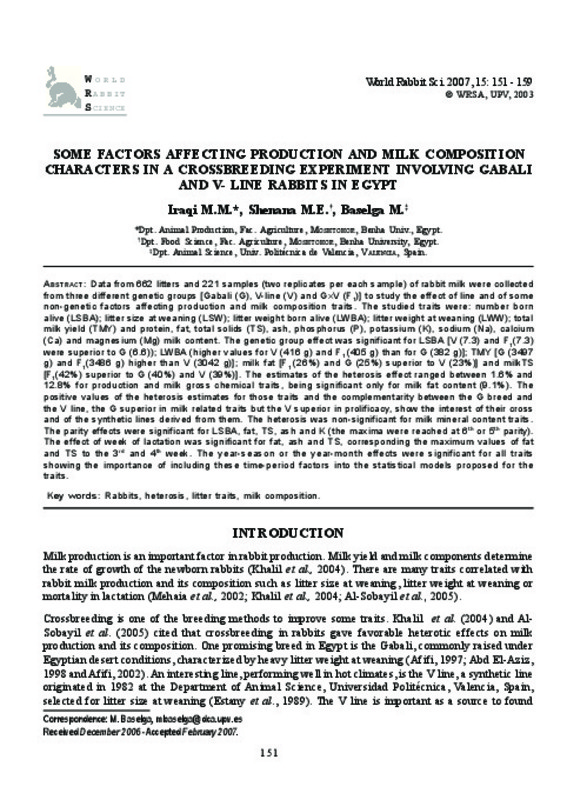JavaScript is disabled for your browser. Some features of this site may not work without it.
Buscar en RiuNet
Listar
Mi cuenta
Estadísticas
Ayuda RiuNet
Admin. UPV
Some factors affecting production and milk composition characters in a crossbreeding experiment involving Gabali and V- line rabbits in Egypt
Mostrar el registro completo del ítem
Iraqi, M.; Shenana, M.; Baselga, M. (2007). Some factors affecting production and milk composition characters in a crossbreeding experiment involving Gabali and V- line rabbits in Egypt. World Rabbit Science. 15(3). https://doi.org/10.4995/wrs.2007.594
Por favor, use este identificador para citar o enlazar este ítem: http://hdl.handle.net/10251/9495
Ficheros en el ítem
Metadatos del ítem
| Título: | Some factors affecting production and milk composition characters in a crossbreeding experiment involving Gabali and V- line rabbits in Egypt | |
| Autor: | Iraqi, M.M. Shenana, M.E. Baselga, M. | |
| Fecha difusión: |
|
|
| Resumen: |
[EN] Data from 662 litters and 221 samples (two replicates per each sample) of rabbit milk were collectedfrom three different genetic groups [Gabali (G), V-line (V) and GxV (F1)] to study the effect of line and of ...[+]
|
|
| Palabras clave: |
|
|
| Derechos de uso: | Reserva de todos los derechos | |
| Fuente: |
|
|
| DOI: |
|
|
| Editorial: |
|
|
| Versión del editor: | https://doi.org/10.4995/wrs.2007.594 | |
| Agradecimientos: |
This project was supported by the Spanish Agency of International Cooperation (A.E.C.I.) and the Center of Cooperation for Development of the Universidad Politécnica de Valencia, Spain. We, also, appreciate the effort of ...[+]
|
|
| Tipo: |
|








